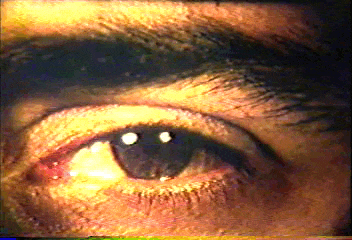Nystagmus
Nystagmus is an involuntary movement of the eye, from side to side in a swinging motion. These movements are usually jerking or jiggling “to and fro” or up and down.
Nystagmus is typically classified as congenital or acquired, with multiple subcategories.
- Manifest Nystagmus
- Congenital Nystagmus
- Manifest-latent Nystagmus
- Acquired Nystagmus
- Latent Nystagmus
Congenital Nystagmus onset in the first few months of age. Most common nystagmus is congenital, where both eyes move together and oscillate like a pendulum. Many people with congential mystagmus have a “null zone” meaning a position of gaze when the eyes moves the least and vision is clear, with a face turn. For example, if the eyes moves the least when looking to the left, the person will tend to turn their face to the right.
Manifest Nystagmus is present at all times.
Latent Nystagmus occurs when an eye is covered.
Manifest-latent Nystagmus is similar to the above, except they’re always present, but get worse when one eye is deprived.
Acquired Nystagmus onset is after 6 months of age. It can have many etiologies. It can be associated with serious medical conditions, head trauma, or a neurological problem.
Symptoms Of Nystagmus
 Nystagmus may be the result of poor vision. Children with poor vision due to an eye condition, such as albinism, congenital cataracts, or underdeveloped optic nerves in both eyes, tend to develop nystagmus at 3-4 months of age. Therefore, it is important to determine the underlying cause of visual impairment that way appropriate diagnosis, management and treatment is carried out. In some cases, the cause of visual impairment requires further examination such as colour vision and medical scans of the brain.
Nystagmus may be the result of poor vision. Children with poor vision due to an eye condition, such as albinism, congenital cataracts, or underdeveloped optic nerves in both eyes, tend to develop nystagmus at 3-4 months of age. Therefore, it is important to determine the underlying cause of visual impairment that way appropriate diagnosis, management and treatment is carried out. In some cases, the cause of visual impairment requires further examination such as colour vision and medical scans of the brain.
There are two basic types of nystagmus:
- Optokinetic (eye related)
- Vestibular (inner ear related)
People with inner ear problems can develop a “jerk nystagmus” where the eyes may drift slowly in one direction and then quickly jerk back the other direction. This may causes symptoms of nauseousness and vertigo to the patient. This type of nystagmus is normally temporary and will clear up when the inner ear issue is sorted.
People with nystagmus may have issues with vision and self-concept. This is due to difficulty in seeing detail easily. To see better, some people turn their heads to a point where the eyes move the least, also known as the “null point” which reduces the amount of eye movement. People with nystagmus often need to look longer at things to be able to identify detail.
Nystagmus Treatment Options
 In some cases, nystagmus does tend to improve slightly over the years, but without treatment, though it never goes away. Normally, the first management option is correction of any significant refractive errors with spectacles, prisms or contact lenses. Eyeglasses and contact lens will improve the quality of vision particularly for near work. For older people contact lenses may be preferred. Some studies have suggested that rigid lenses may actually slow down the pendular like movement of a nystagmus helping patients to see detail more easily.
In some cases, nystagmus does tend to improve slightly over the years, but without treatment, though it never goes away. Normally, the first management option is correction of any significant refractive errors with spectacles, prisms or contact lenses. Eyeglasses and contact lens will improve the quality of vision particularly for near work. For older people contact lenses may be preferred. Some studies have suggested that rigid lenses may actually slow down the pendular like movement of a nystagmus helping patients to see detail more easily.
Vision therapy provides the opportunity to develop better eye movement control, eye hand co-ordination skills and binocular vision. This can slow the rate of nystagmoid movement and improve the ability to see detail.
Several medical and surgical treatments can be offered to people with nystagmus. The goal of surgery is to change the null positions, to reduce the head tilt and improves cosmesis. These may have some effect if there is a large head turn. Drugs such as Botox or Baclofen may reduce nystagmic movements as it relaxes the muscles of the eyes. Although in this the case, these results are only temporary.
Vision habilitation is an important treatment modality for those with vision impairment and find it difficult to perform everyday tasks. Vision habilitation enables the person to maximize visual function through the use of low vision aids such as electronic magnification devices and incorporating adaptive strategies. One common strategy useful for children with nystagmus is using large print fonts, which can be easily increased using a tablet/computer.
Intervention should be individualized based on patient age, function, needs, and concerns. If you have any questions, come visit our lovely optometrists at Eyecare Plus for more information.
